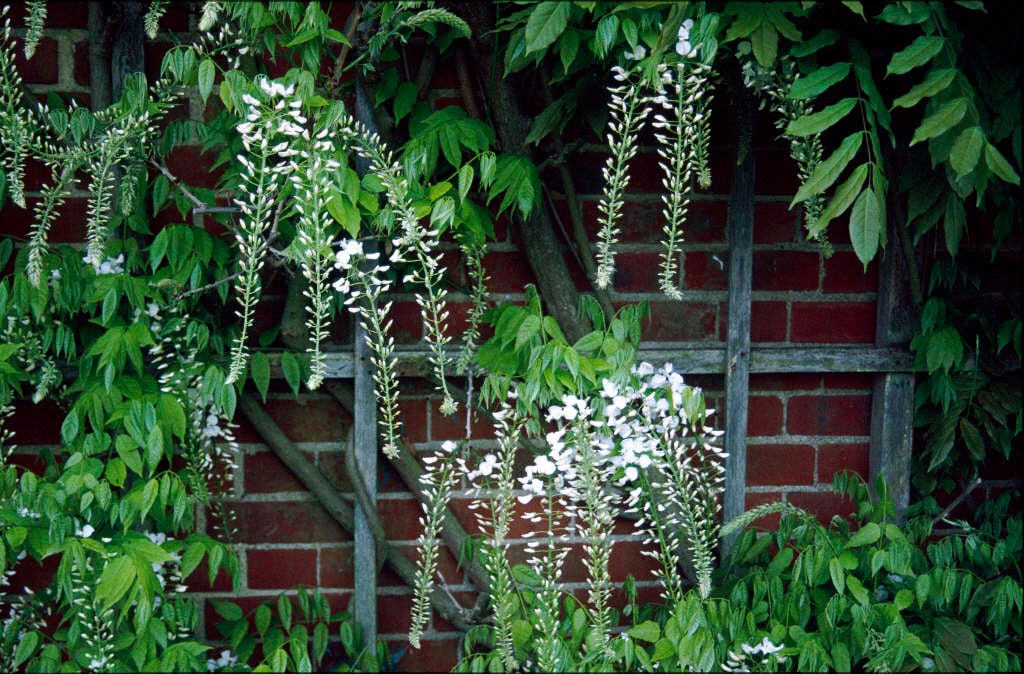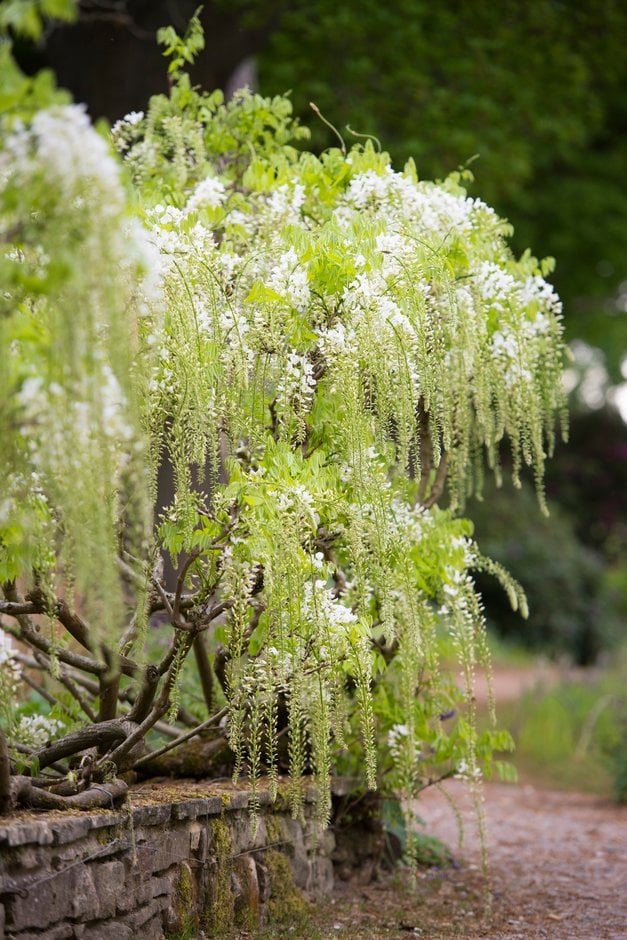Wisteria floribunda f. alba 'Shiro-noda'
white Japanese wisteria
A large, vigorous, twining climber, with pinnate leaves to 35cm in length, and drooping racemes to 60cm in length, composed of fragrant white flowers, tinged lilac, opening with the leaves
Synonyms
Wisteria floribunda 'Shiro-naga'Wisteria floribunda 'Snow Showers'
see moreWisteria multijuga 'Alba'
Wisteria floribunda 'Alba'
Wisteria floribunda 'Longissima Alba'
Size
Ultimate height
4–8 metresTime to ultimate height
10–20 yearsUltimate spread
2.5–4 metresGrowing conditions
Moisture
Moist but well–drainedpH
Acid, Alkaline, NeutralColour & scent
| Stem | Flower | Foliage | Fruit | |
| Spring | White | Green | ||
|---|---|---|---|---|
| Summer | White | Green | ||
| Autumn | ||||
| Winter |
Position
- Full sun
- Partial shade
Aspect
South–facing or West–facing
Exposure
Sheltered Hardiness
H6Botanical details
- Family
- Fabaceae
- Native to GB / Ireland
- No
- Foliage
- Deciduous
- Habit
- Climbing
- Potentially harmful
- Harmful if eaten. Wear gloves and other protective equipment when handling. Pets: Harmful if eaten - for further information and contact numbers regarding pets, see the HTA guide to potentially harmful plants
- Genus
Wisteria are vigorous woody climbers with twining stems bearing pinnate leaves and long pendulous racemes of fragrant pea-like flowers in spring and early summer
- Name status
Accepted
How to grow
Cultivation
A large, long-lived climber so choosing the right site is important. Can be grown informally through large tree or more formally against a house wall or trained as a free-standing half standard in a container. Will grow in most soils that are moist but well-drained. See wisteria cultivation for more advice
Propagation
Propagate by layering, softwood cuttings, hardwood cuttings or grafting
Suggested planting locations and garden types
- Cottage and informal garden
- Wall side borders
- Climber and wall shrubs
Pruning
Prune twice a year for best results, see pruning wisteria for detailed advice
Pests
May be susceptible to aphids, glasshouse red spider mite, and scale insects including wisteria scale
Diseases
May be susceptible to honey fungus (rarely), phytophthora root rot, coral spot, fungal leaf spot, virus diseases, and powdery mildews
Love gardening
Sign up to receive regular gardening tips, inspiration, offers and more
View our Privacy Policy
Get involved
The Royal Horticultural Society is the UK’s leading gardening charity. We aim to enrich everyone’s life through plants, and make the UK a greener and more beautiful place.

